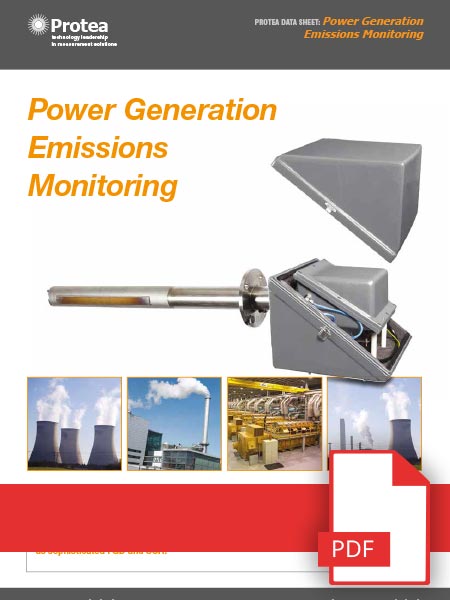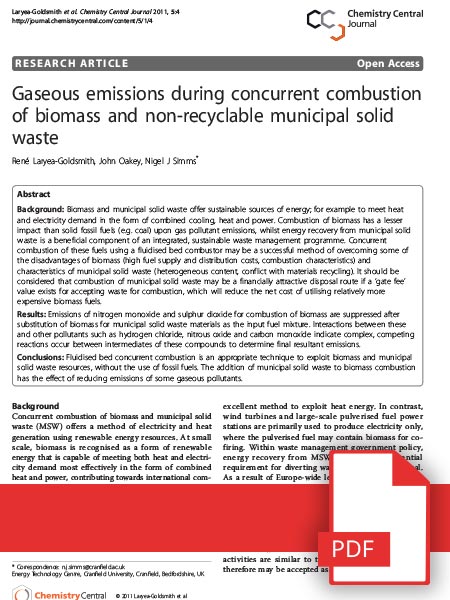Waste Incineration CEMs
Protea is the most experienced company in the UK in using FTIR to measure emissions. Through running a UKAS-accredited test house and being a manufacturer of gas analysers, we have been involved in FTIR as a supplier and user for 10 years.
Protea’s atmosFIR CEM has been specifically designed to allow continuous emissions monitoring of the standard WID suite of gases. Using FTIR technology a wide range of emissions can be measured in one system.
| Detected and Measured Species |
|---|
| CO |
| NO |
| NO2 |
| SO2 |
| COF2 |
| HCL |
| NH3 |
| HF |
| CH4 |
| HCHO |
| H2O |
| CO2 |
| O2 |
Power Generation CEMs
For more than 25 years, coal, oil and gas fired power plants have installed Protea analysers as their preferred CEM. Throughout this period, there has been increasing environmental scrutiny and process upgrades, including the near-ubiquitous use of after-treatment systems such as sophisticated FGD and SCR.
P2000 emissions analysers are used in coal, oil, gas and biomass fired plants in Europe, USA and in the Asia Pacific region, including one of Europe’s largest coal fired powerplant, operated by Drax Power in the UK, where a total of eighteen units are installed. Drax have relied on P2000 units for over 15 years of continued and reliable operation on coal and biomass top-up fired fuels. Supported by Protea’s International Service Department.
Oil & gas fired thermal powerplants are a mirror of their larger coal fired equivalents although specific emissions limits are often lower. This places demanding requirements on the CEMS analyser in terms of process stress with an additional loading of having to measure at lower absolute levels.
HF Emissions
HF is a highly reactive gas and is seriously damaging to human health, consequently it has strict emission limits imposed by legislation. In addition to the effects on humans, emissions have been found to damage crops and fruit trees, as well as the general environment. Industry strives to reduce the amount of HF emissions and numerous projects have been carried out into the research and development of proposed process modifications that introduce ways to reduce hydrogen fluoride emissions via the latest technology such as filters and scrubbers.
The standard method for HF measurements in emissions is a manual technique of isokinetic sampling and impingement, followed by analysis by ion selective electrodes. However, this methodology does not provide the continuous, process specific measurement that comes from an FTIR analyser for HF. Spot measurements of HF may be all that is required for compliance with emissions legislation, but plant operators looking to reduce their HF emissions are interested in the time-resolved emissions to track peaks in emissions and tailor the emission abatement techniques to best suit to emission at all periods.
Protea’s FTIR gas analysers have been specifically developed for the measurement of reactive gases such as HF from industrial emissions. FTIR is ideally suited to measurement of not just HF, but the whole range of gaseous emissions from processes such as incineration and brickworks, including CO2, CO, SO2, NOx and also speciated VOCs. FTIR proves a highly cost-effective measurement solution. Protea’s FTIR systems offer a high resolution measurement, meaning that the spectrum of HF that is measured is clearly identifiable and of increased absorption, enabling lower detection limits (LDLs) for HF to be achieved.
Not only does Protea provide a leading analytical instrument for HF, but our experience and knowledge in sampling is important when measuring reactive gases like HF and HCl. Correct choice of sample probe, filter and heated sample line materials, as well as operating temperature and conditioning of the sampling system all have to be taken into account to complete the measurement system.
Formaldehyde Emissions
Reciprocating internal combustion engines burning natural gas are a source of formaldehyde emissions. There are strict tolerances imposed on operators of engines to ensure that formaldehyde is removed effectively and that formaldehyde emissions are below published limits.
The only instrumental method for formaldehyde monitoring is FTIR, following procedures such as US EPA Method 320, Environment Agency TGN M22 and CEM/TS 17337. Protea’s FTIR gas analysers have been specifically designed to follow these methods and have been proven in formaldehyde emission measurements over many years.
FTIR formaldehyde monitoring requires extreme care and quality assurance at the calibration stage. Traceable formaldehyde standards are as easily available as other gases and Protea has done a lot of work in proving our calibrations are valid, with technical studies completed on theoretical spectra from the HITRAN database as well as comparative testing against manual methods for aldehyde analysis.
Accurate formaldehyde monitoring can be carried out on both our transportable FTIR as well as fixed continuous emissions systems (CEMs) for formaldehyde. With Protea's advanced data processing software, data collected in the field can be re-processed for formaldehyde months or years after the data has been collected.
Biomass Emissions Monitoring
The use of alternative combustion fuels that provide a renewable source of energy is a major area of research and investment. Sources of biomass fuels include virgin wood, energy crops, agricultural residues, food waste and industrial waste. Controlling the combustion process of any new fuel and keeping track of the biomass fuel emissions of combustion by-products is important to users of these new fuels.
Protea has supplied FTIR gas analysers to applications at the forefront of research into new fuels. FTIR biomass gas analysis allows for identification and measurement of common inorganic combustion products (CO, CO2, NOx, SOx) as well as organic species that could be the result of incomplete combustion.Research Article
Gaseous emissions during concurrent combustion of biomass and non-recyclable municipal solid waste. René Laryea-Goldsmith, John Oakey and Nigel J Simms, Energy Technology Centre, Cranfield University, Cranfield, Bedfordshire, UK.
FTIR and FID Integration
atmosFID is a Flame Ionisation Detector (FID) analyser from Protea that can give Total VOC (TVOC) measurement in stack emissions and process applications. atmosFID is certified under EN 15267-3 and MCERTS for continuous emissions monitoring (CEM) applications. The benefit of atmosFID from Protea is that it works alongside, and seamlessly integrates with, our other range of stack emissions gas analysers, such as the atmosFIR FTIR multigas analyser. Both FID and FTIR operate together with the same software control and data logging, giving a fully integrated and supported solution from a single UK manufacturer.
atmosFIR CEM with atmosFID TVOC analyser
Protea is a UK manufacture of complete CEM systems and as such the atmosFID TVOC analyser can be provided integrated within our CEM system for combined operation with multigas FTIR.
Protea will provide a complete CEM with FTIR + FID that will include:
- Common sampling system control i.e. heated line and probe alarms
- Common QAL3 validation system
- Complete internal heated sampling path, using atmosFID heated line control
- No mechanical pumps for sampling, less consumables
- Complete health monitoring for FTIR + FID together
- All emissions data collated, Dry/O2 corrected and available for reporting over single Modbus or OPC communications protocol





